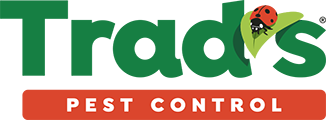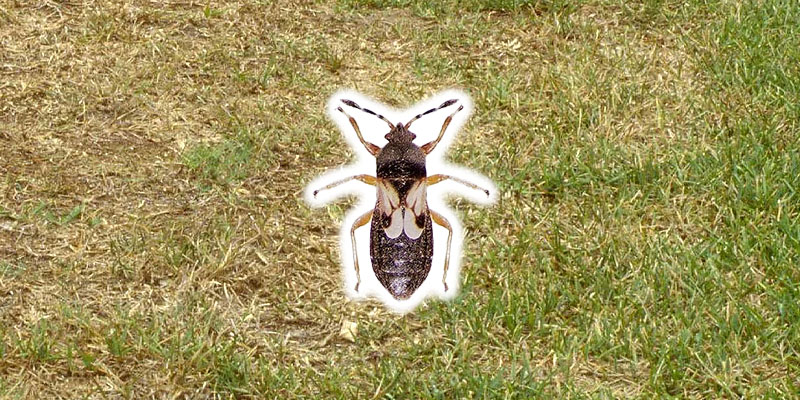Chinch Bugs and St. Augustine Grass Just Don’t Mix. Chinch bugs (Blissus species) are small insects belonging to the family Blissidae. They are known for their ability to cause significant damage to St. Augustine turf, a popular warm-season grass used in lawns across North America. Understanding the biology, attraction, multiplication, and potential damage caused by chinch bugs is crucial for homeowners to effectively prevent and manage infestations.
What is the Chinch Bug?
Chinch bugs are tiny insects, usually measuring between 1/5 to 1/6 of an inch (4-6 mm) in length, with black bodies and white wings. There are several species of chinch bugs, with the most common being the southern chinch bug (Blissus insularis) and the hairy chinch bug (Blissus leucopterus hirtus). These pests are most active during the warmer months and can be found in the southeastern and southern regions of the United States.
What Attracts Chinch Bugs?
Chinch bugs are attracted to specific environmental conditions that are prevalent in St. Augustine turf lawns. They thrive in warm, dry climates and are often found in yards with dense, lush grass. Overwatering and excessive use of nitrogen-based fertilizers can create the ideal conditions for chinch bugs, as they prefer to feed on young, succulent grass blades.
Chinch bugs are attracted to turfgrasses that are stressed or unhealthy. They are also attracted to areas of your lawn that are dry, sunny, and have thin turf. If you live in an area where chinch bugs are a problem, you may want to avoid planting susceptible turfgrasses, such as St. Augustinegrass and Bermudagrass.
Multiplication and Life Cycle of the Chinch Bug
Chinch bugs reproduce through sexual reproduction. Females lay their eggs in the thatch layer of the lawn during the spring and summer months. A single female can lay up to 500 eggs during her lifespan. After a couple of weeks, the eggs hatch into nymphs, which undergo five instar stages before reaching adulthood. The entire life cycle from egg to adult takes about 4 to 6 weeks.
Damage to St. Augustine Turf
Chinch bugs can cause significant damage to St. Augustine turf. As they feed on the sap of the grass, they inject a toxin that can kill the grass blades. This can lead to the formation of brown, dead patches in your lawn. In severe cases, chinch bugs can kill an entire lawn.
Chinch bugs cause damage to St. Augustine turf by using their piercing-sucking mouthparts to extract plant juices from grass blades. The nymphs and adults target the tender, new growth, leading to yellowish patches in the lawn. As the infestation progresses, the grass in the affected areas may turn brown and eventually die off. Chinch bugs can spread rapidly, especially during hot and dry weather, causing extensive damage to lawns if not addressed promptly.
Preventive Measures Homeowners Can Take
Preventing chinch bugs from becoming a problem in your yard requires a combination of proactive measures and vigilant observation. Here are some steps homeowners can take to protect their St. Augustine turf:
- Proper lawn maintenance. Maintain a healthy lawn by following proper watering and mowing practices. Avoid overwatering, as this can create favorable conditions for chinch bug infestations. Mow the grass at the appropriate height for St. Augustine turf to encourage a dense, healthy lawn.
- Monitor and identify. Regularly inspect your lawn for signs of chinch bug activity. Pay attention to areas where the grass appears yellow or brown, as these may be indicative of infestations.
- Promote biodiversity. Encourage a diverse landscape by planting a variety of grasses and plants. Monoculture lawns are more susceptible to pests like chinch bugs, as they provide an abundant food source for these insects.
- Natural predators. Attract natural predators of chinch bugs, such as birds and beneficial insects, to your yard. Providing bird feeders and planting native flowers can help create a welcoming environment for these natural enemies.
Also, homeowners can try an insecticidal treatment. If chinch bugs are detected early and in low numbers, applying insecticidal treatments specifically designed for chinch bug control can be effective. But, always follow the instructions on the product label and apply the insecticide during the cooler parts of the day to avoid damaging the grass.
If You Have Chinch Bugs in Your Yard
Okay, now that we’ve gone over how to prevent chinch bugs from becoming a problem, let’s take a moment to talk about what homeowners can do if they already have a chinch bug infestation. Fortunately, there are a few things you can do to control it, including taking the following measures:
- Water your lawn deeply. This will help to flush the chinch bugs out of the turf. However, you have to be careful about doing this because it could not only hurt your lawn, it can be an open invitation to other pests, like mosquitoes.
- Apply an insecticide. There are a number of insecticides that can be used to control chinch bugs. Be sure to choose an insecticide that is labeled for use on turfgrasses.
- Reseed any dead or damaged areas. This will help to fill in the gaps in your lawn and prevent the chinch bugs from spreading. Plus, it will help to keep your yard looking its best.
By following these steps, you can help to get rid of chinch bugs and stop these destructive little invaders from causing all kinds of damage to your lawn. Of course, if none of these strategies work, it’s highly advisable to hire a professional pest control service to take care of the problem.
What We’ve Learned
Chinch bugs can be a formidable foe for homeowners with St. Augustine turf lawns. By understanding their biology, attraction, multiplication, and the damage they can cause, homeowners can take proactive measures to prevent and manage chinch bug infestations effectively. Regular lawn maintenance, monitoring, and promoting biodiversity are essential steps to keep these pests at bay and maintain a lush, healthy lawn.

